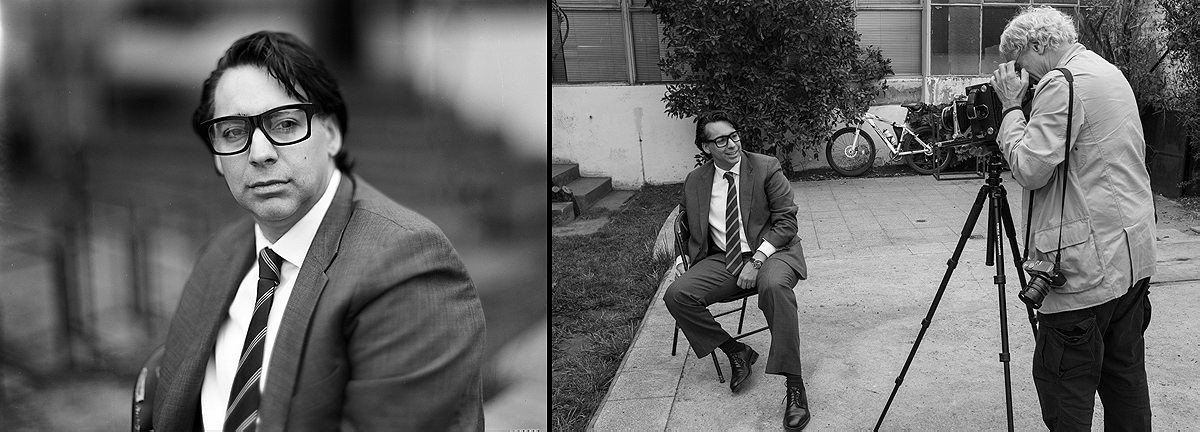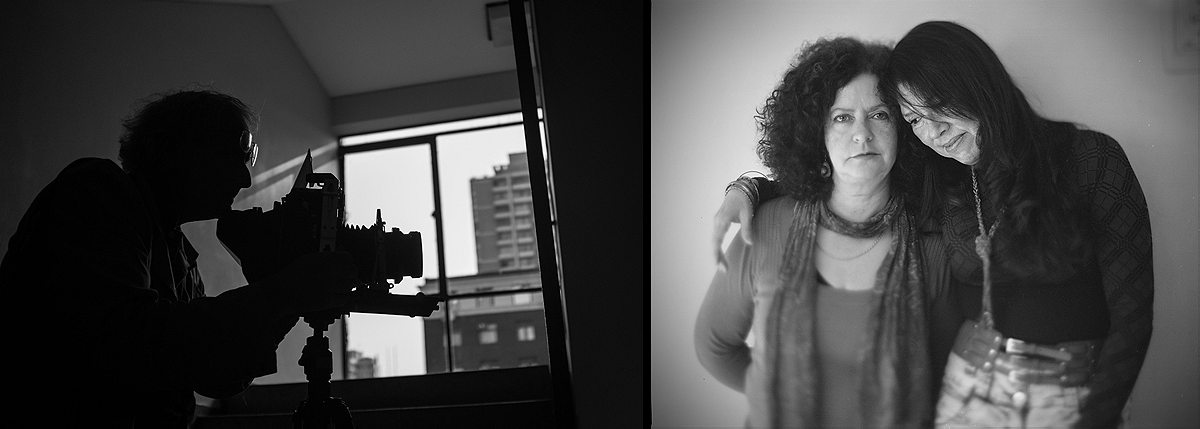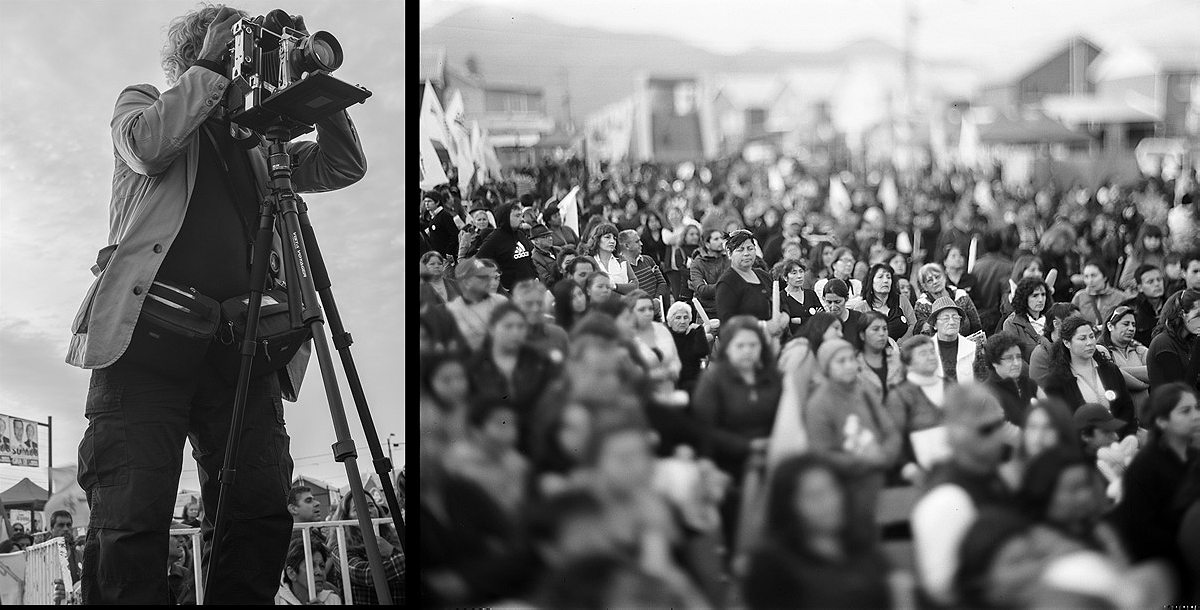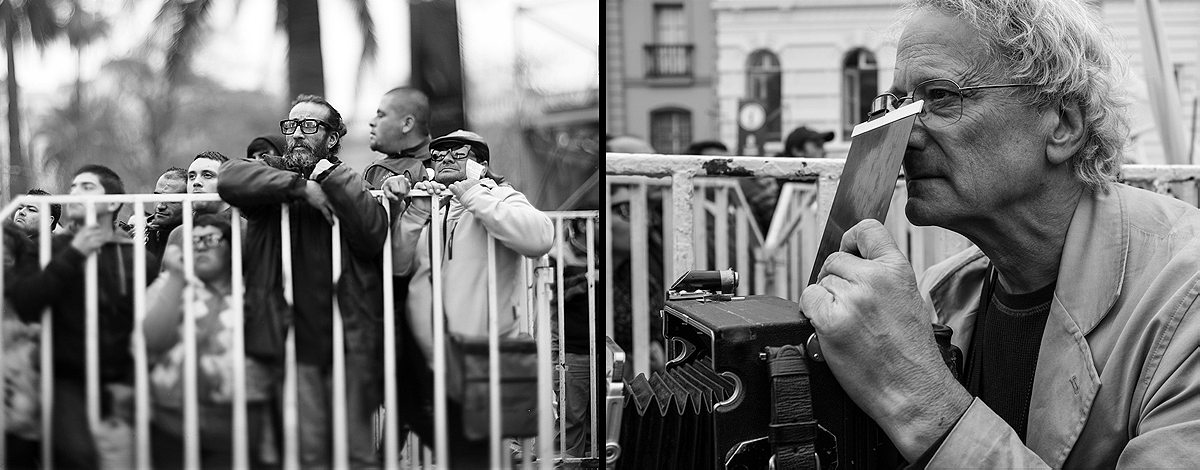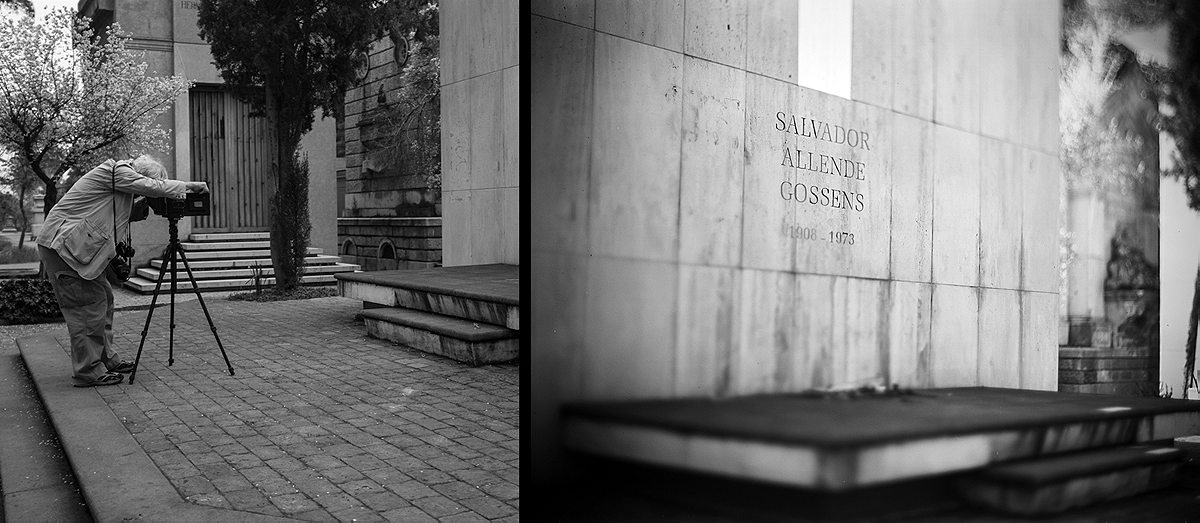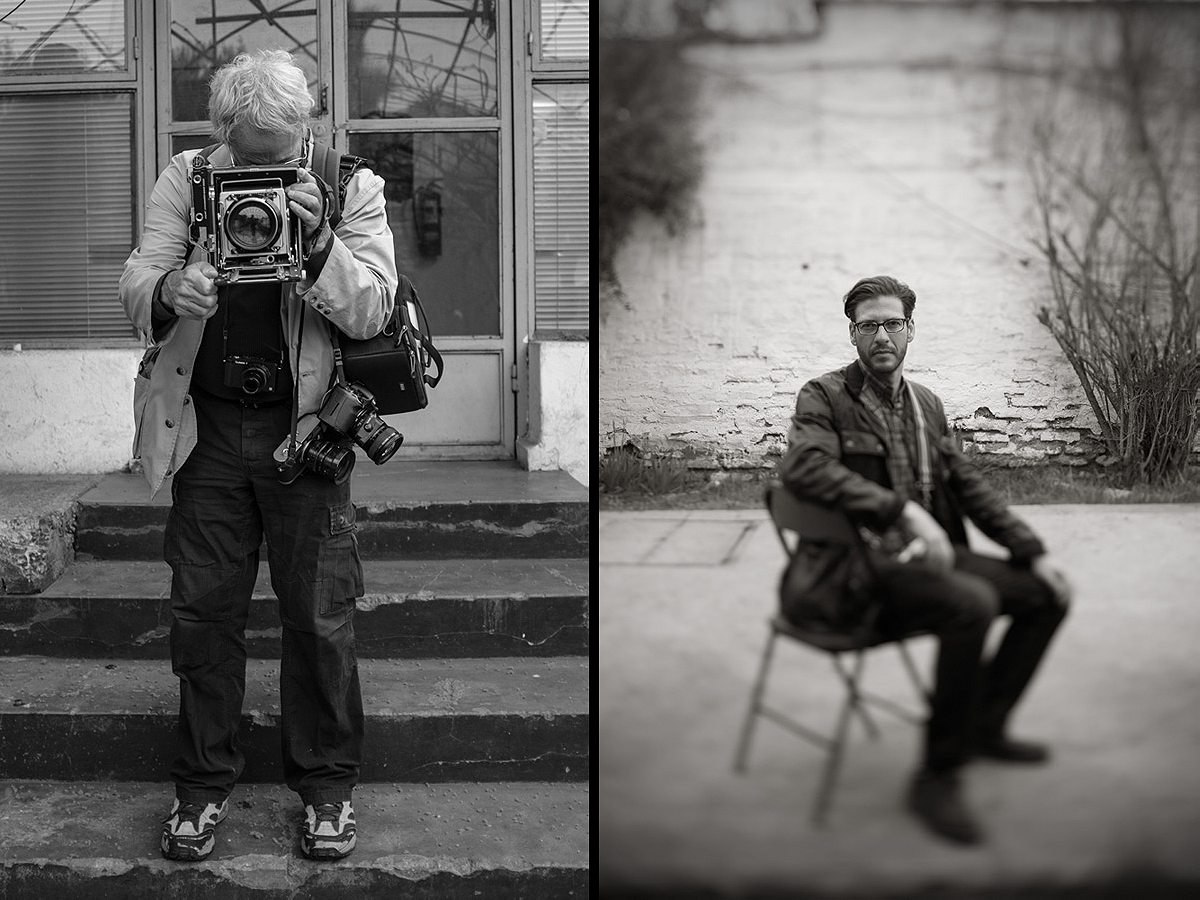Photographer Michael Magers captures photographer David Burnett at work as Burnett returns to Chile with his Speed Graphic 4×5 camera.
The past few presidential-campaign press pools, with their artillery arrays of Canons and Nikons, have been easy places to pick out David Burnett. He’s the guy with a camera made of wood.
He is the only major photojournalist working today with a Pacemaker Speed Graphic, the camera that was standard-issue among newspapermen for the middle third of the twentieth century. This is the camera Burnett took with him on a recent trip to Chile—40 years after he photographed the coup there. His rig looks otherworldly to us now, with its bellows and a shutter powered by a wind-up key. It has to be reloaded with a fresh flat sheet of film for every single shot. The photos it makes, though, are anything but quaint. Those big negatives—four by five inches, Kodak Tri-X—hold far more visual information than a little digital sensor can grab, and can be printed with spectacular fidelity. The 178mm f/2.5 Aero Ektar lens he uses, made by Kodak for a wartime reconnaissance plane in 1943, is capable of uncanny sharpness, and its limited depth of field means that portraits, for example, jump out from their soft-focus backgrounds, drawing the viewer’s eye to the subject. (You can use software to sorta-kinda mimic this effect, called “bokeh,” in your digital pictures. The naturally occurring kind looks far better.) Burnett, after using a variety of film and digital cameras over a long career, adopted the Speed Graphic about ten years ago. The results have everything: the urgency of twenty-first century information, the conscious beauty of artwork.
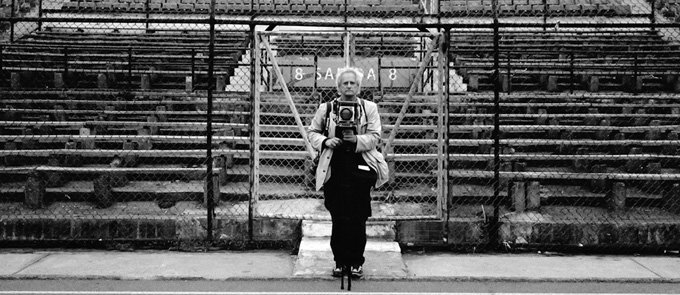
Burnett at the National Stadium where he was arrested in 1973. Photo by Michael Magers.
Making pictures this way is, by the way, a huge pain in the ass. Those sheets of film need to be loaded in their holders in a darkroom—or, if you’re a photojournalist on the road, a motel bathroom with a bathmat shoved against the light leaking under the door. Shooting Chilean President Sebastian Piñera last week, en route to the airport for a flight back to New York, required a reloading pit-stop in a men’s room at La Moneda Presidential Palace, which was nearly interrupted by someone from the palace security detail.
Shooting in the field requires its own deft dance: open the shutter, compose the photo, close the shutter, drop in the film holder, pull the darkslide, pop the shutter, return the darkslide, remove the filmholder, repeat. Burnett, after long practice, can run through this cycle a lot faster than you’d expect. The camera, and the dance, nearly always attract a crowd, and in Santiago it was no different. Because of his photos from the 1973 coup—and some television appearances based on his return to Chile—Burnett is as well-known as any foreign photographer in Chile. But his Speed Graphic was the star. Photographer Michael Magers was working with Roads & Kingdoms on the trip, and was equally fascinated by watching Burnett work. On this page, we present a selection of Burnett’s 4×5 pictures from Santiago this month, and Magers’ pictures of Burnett at the moments he made those images.
One thing is clear: both Burnett and his Speed Graphic may have been born during the Truman administration, but both have decades of work left in them. —Christopher Bonanos
